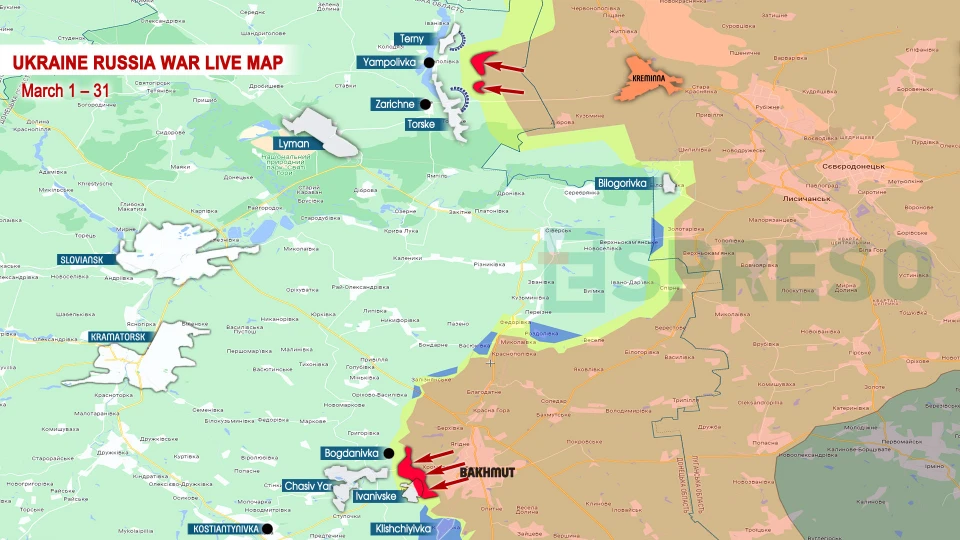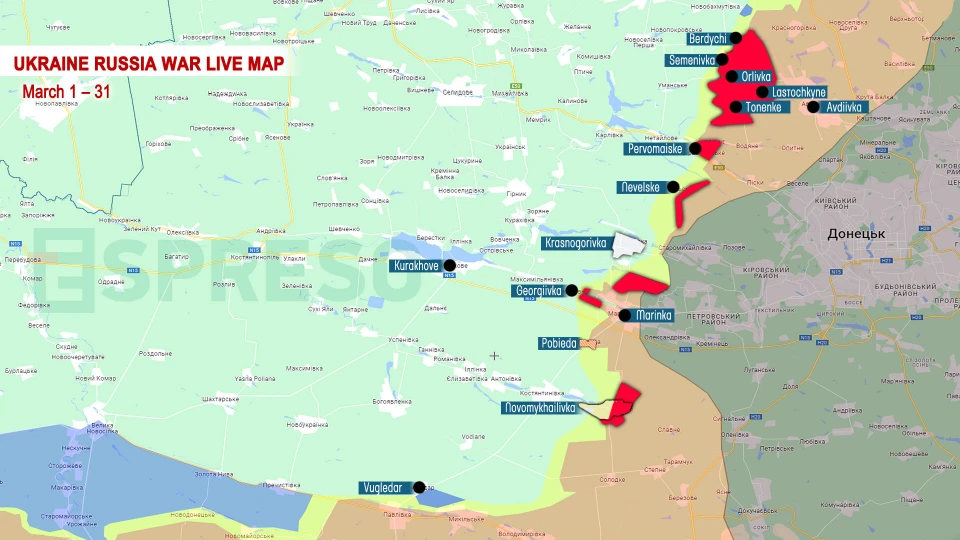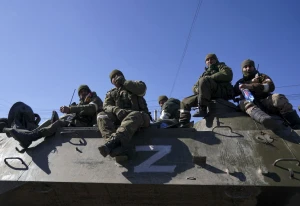
March 27 – April 3 live war map: Ukraine's new records and threat to Chasiv Yar
March saw territorial gains for the Russians amounting to 0.01% of Ukraine's territory, and marked significant advancements in active front areas. Despite this, the Armed Forces achieved record enemy destruction levels across various metrics
March combat outcomes
On the frontline, the Russians have bet on guided aerial bombs, against which the Ukrainian Armed Forces currently have no countermeasures. In February, Russian forces launched a record 1,500 guided bombs on our trenches. In March, this number surged to nearly 2,400, almost doubling the previous month's bombardment. Moreover, the enemy is consistently striving to enhance the accuracy of these aerial attacks.
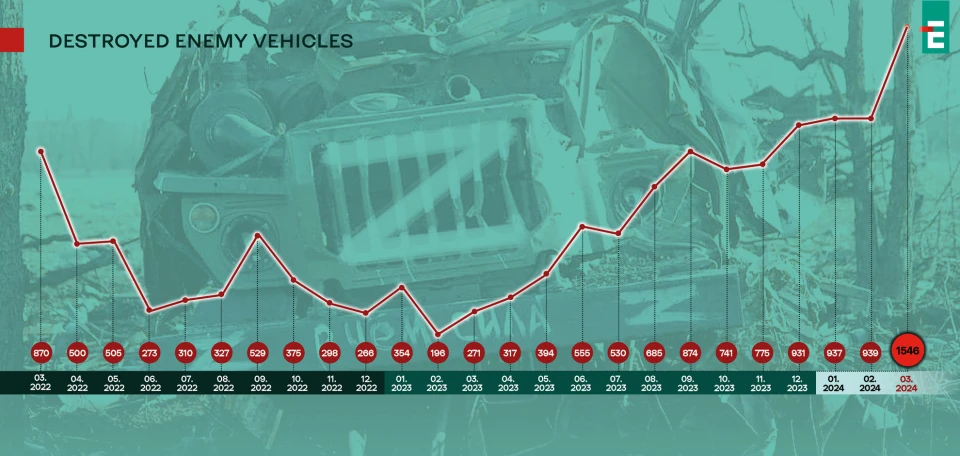
In March, the Ukrainian Armed Forces achieved four new records for destroying Russian forces. They eliminated 1,546 vehicles, marking a 40% increase compared to February's record. Additionally, they destroyed 215 pieces of special and unique equipment, also a new high. The Armed Forces launched 976 artillery strikes and 963 tactical-level drones.
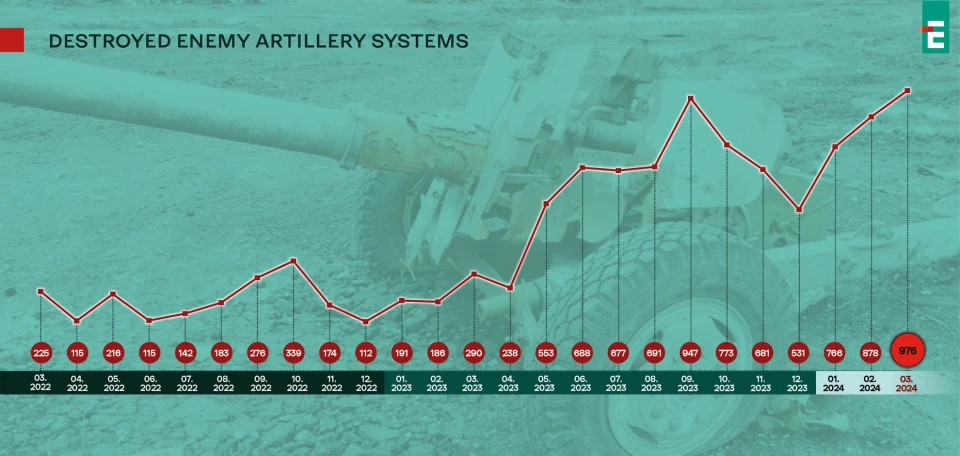
The destruction of 53 air defense systems is a significant achievement for the entire war period. Although the destruction of 376 tanks and 769 infantry fighting vehicles isn't record-breaking, they still rank in the top 5, as well as over 28,000 Russian casualties.
Despite a shortage of artillery shells, the Defence Forces achieved these impressive results due to a substantial increase in kamikaze drone strikes. Military researchers recorded 1,062 Ukrainian drone strikes in March, surpassing the 652 strikes by Russian drones.
Lyman area news for the past month
In March, the Russian Air Force made significant advances in key areas on the eastern front thanks to guided aerial bombs. They aimed to prepare for an attack on the Kramatorsk-Slovyansk aglomeration, with Lyman as a target for months. However, the Defense Forces successfully held the left-bank bridgehead on the Zherebets River in March, preventing the occupation of Terny and Yampolivka villages. Despite numerous attacks, the invaders only succeeded in a small section of the front.
Map of the battle of Chasiv Yar
To the south of the Kramatorsk agglomeration lies Chasiv Yar, a critical location. In March, Russian forces breached the front line, advancing up to two kilometers, capturing half of the village of Ivanivske and progressing along the Bakhmut - Chasiv Yar road, gaining a strategic height advantage over the defenders of Ivanivske and Bohdanivka. By the end of March, the enemy had further pushed our defenses back and positioned themselves north of Ivanivske, hindering logistics to the village. By early April, they had advanced towards the southern outskirts of the village.
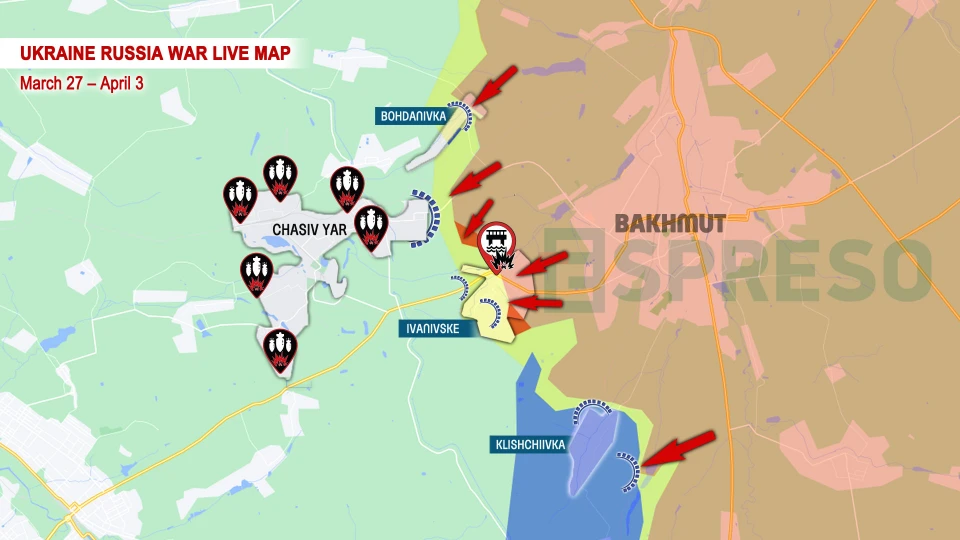
Apparently, we anticipate the withdrawal of the Ukrainian Armed Forces from these villages in the near future, followed by a prolonged battle for Chasiv Yar in April. It's likely that Ukrainian forces destroyed the bridge from Ivanivske to Chasiv Yar in preparation for their departure. The intensity of pressure has decreased significantly already, as previous assaults have left the road to the city strewn with dead bodies and disabled armored vehicles.
Map of Avdiivka bridgehead combat operations
The enemy made significant advances in the Avdiivka direction during March. Following the evacuation of the city, Ukrainian Armed Forces had to vacate areas previously under fire control from Avdiivka hill, relocating to new defense lines. As a result, the Russian Federation took control of various areas within 2 to 9 kilometers of our Donetsk region, including the villages of Lastochkyne, Sieverne, Orlivka, Stepove, Tonenke, and Vodiane. Intense fighting persists in the village of Berdychi, with half already under Russian control. Towards the end of March, Russian forces managed to breach the central part of Pervomaiske and later completed the occupation of Vodiane, which had been held by the enemy for over a year. There were earlier claims of their capture of Nevelske, but these turned out to be false.
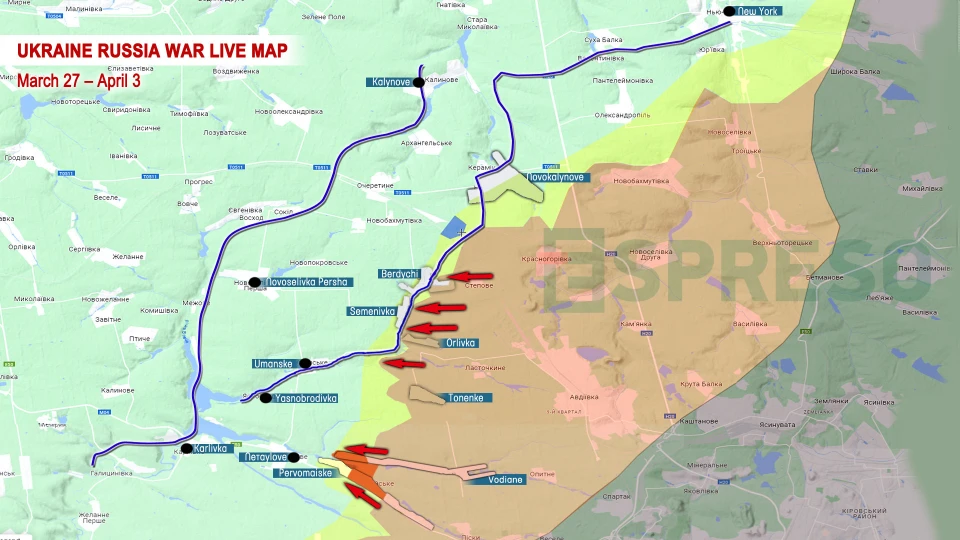
Simultaneously, our soldiers fortified themselves along a new defensive line spanning the villages of Berdychi, Semenivka, Umanske, and Netaylove. In early April, the occupiers concentrated their efforts on advancing towards Umanske, but were repelled by the 25th brigade, which destroyed 12 tanks and 8 IFVs. On another front, the enemy attempted to cross the Durna River to breach our defenses between Semenivka and Orlivka.
Vuhledar and Kurakhove directions
Despite numerous assaults and attempts to occupy the partially surrounded Novomykhailivka, the Russians only managed to capture the eastern part of the village in March. A similar situation is observed near Marinka, where the invaders are striving to expand their control zone northward, attacking Krasnohorivka to the west, through Heorhiivka, and to the south, where they have failed to establish a foothold in the village of Pobieda. Despite the presence of a large number of troops on this part of the front and increased pressure at the end of the month, the occupiers' gains are minimal, and the Defense Forces successfully repel the attacks.
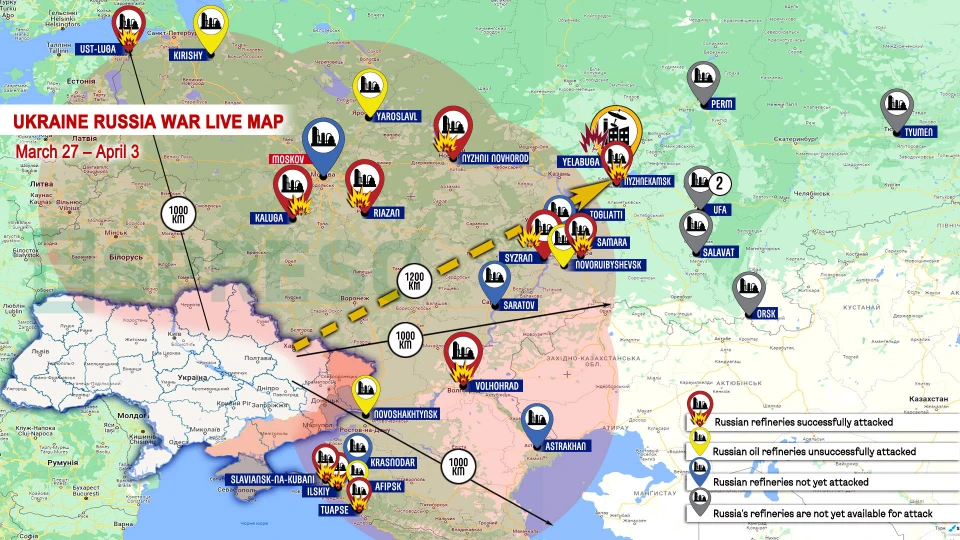
Russia's vulnerabilities deepen
Immediately after Kyiv announced the development of drones capable of flying over 1000 km, they targeted an Alabuga drone production plant, Tatarstan. They also struck the "TANECO" refinery in Nizhnekamsk, the 13th largest plant in Russia, processing 8.6 million tons of oil annually, or 3% of the total annual refining in Russia.
The distance to Nizhnekamsk is over 1,100 km in a straight line, but drones do not fly in a straight line. Hence, their capabilities are even greater. The extent of their capabilities will be revealed after targeting new objectives, which could include refineries in Bashkortostan or military plants in Izhevsk.
The maps were crafted based on information provided by the General Staff of the Armed Forces of Ukraine and other reliable open sources. However, the maps are not perfectly precise and only offer a rough depiction of trends in the war zone.
- News





